How to Fix a Broken Nail in No Time
Summer is typically when we show off our prettiest pedicures and most vibrant manicures. But taking care of our fingertips is a year-round necessity in order to ensure they stay strong and healthy. After all, no matter your preferred length, no one likes breaking a nail. It’s incredibly painful and forces all of us wishing to grow ours longer back to square one.
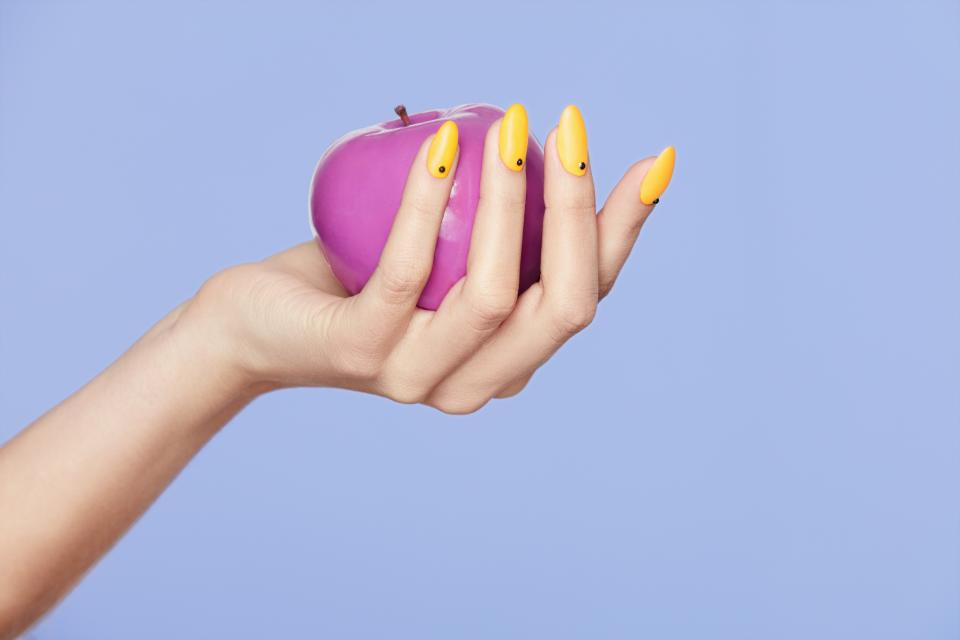
While breaks are a year-round concern, trying to prevent them becomes much more challenging in the fall and winter. According to celebrity manicurist Betina Goldstein, a drop in humidity (whether indoors or outside) can be one of the contributing factors that affects the strength of our tips as well as the moisture levels in our hands. “The cooler temperatures of the fall and winter seasons provide less moisture in the air,” the nail artist, who works with Julianne Moore, Issa Rae, and Zoë Kravitz, explains. “Dehydrated nails are dry and brittle and can break and split easier.” (Photo via puhhha/ Getty)
After reading that, you might think the answer is to head indoors as soon as the temperature starts to drop, however, the same way artificial heating and cooling can affect your skin, it can wreak havoc on your nails too thanks to even lower humidity levels. There’s no denying that the moisture in the air definitely has an important role in nail strength; however, Shari Lipner, assistant professor of dermatology at the Weill Cornell Medical College at Cornell University in New York, explains, “Some people suffer from brittle nail syndrome where they peel, break, and split easily, and these symptoms tend to flare in the cold winter months.”
Thankfully, there are a number of ways to avoid the situation, regardless of the forecast. We turned to a number of experts to score their best tricks to keep your tips protected, as well as to offer a few solutions to avoid infection and save whatever length you have left should you break a nail.
Maximize Your Moisture
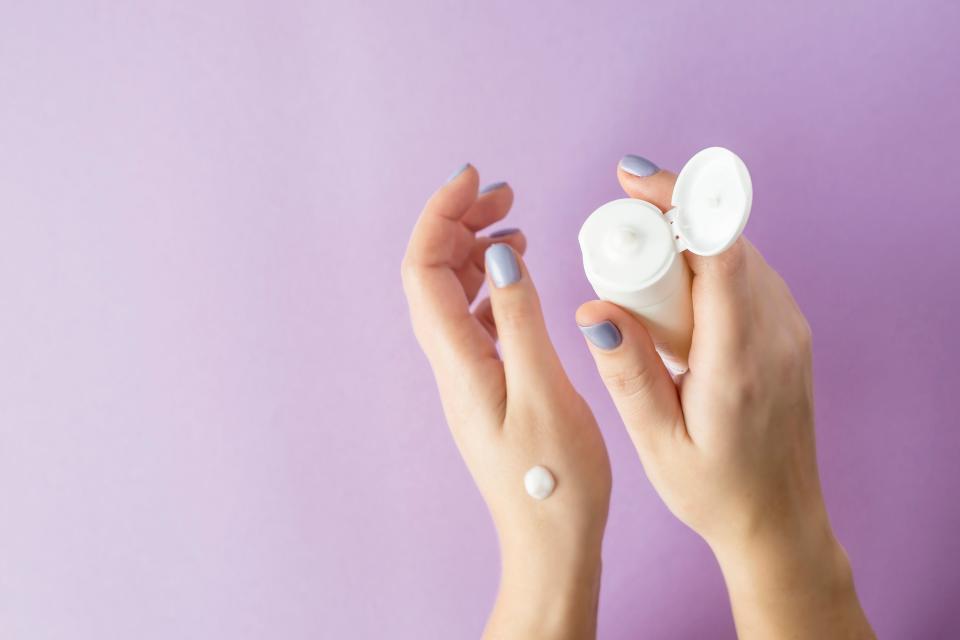
When the humidity drops during the chillier months of the year, adding that missing moisture back into your hands is even more essential. To help dampen the air, try plugging in a humidifier. “Staying adequately hydrated by drinking plenty of water each day and keeping a natural cuticle oil and hand cream in your purse is a must,” Goldstein says. “Remember to moisturize after you wash your hands.” At the very least, she suggests using an oil-based moisturizer like Burt’s Bees Hand Salve ($8) that you can apply first thing in the morning and right before bed to keep hands soft and moist all day long. The experts also recommended exfoliating the area two to three times a week with a gentle scrub like Herbivore Botanicals’ Coco Rose Body Polish ($36) or even Dermalogica’s Daily Microfoliant ($15) before applying your go-to hand cream. This will help the moisture better penetrate through the layers for long-lasting hydration to help ward off brittle tips. (Photo via Valeriia Sviridova / EyeEm/ Getty)
Speaking of cuticle oil, it can be a total life saver when it comes to keeping the delicate area of skin surrounding the nail bed soft and supple. And, the smoother and more hydrated the skin, the less likely it is to snag, rip, or tear. “I’m a big believer that healthy nails start with healthy cuticles,” says celebrity manicurist Mazz Hanna. To see if this holds true, try slathering on her eponymous cuticle oil ($28) that’s formulated with hemp seed oil, an ingredient packed with fatty acids, vitamins, and antioxidants to keep claws healthy and strong, as well as lavender and geranium essential oils to prevent infections. Skyy Hadley, the owner of As “U” Wish Nail Spa in Hoboken, NJ, says applying a little bit of coconut oil can also do the trick.
Keeping your mitts moisturized also means staying away from things that can further dry out those areas, like your go-to lacquer remover. Goldstein opts for an oil-based formula like Karma Organics Soy Bean Oil and Lavender Nail Polish Remover ($12) in lieu of anything with acetone. “Acetone is extremely harsh and dries your nails and cuticles out very quickly,” she says. “Using a natural oil-based polish remover will keep [them] hydrated and healthy all year long.”
Stop Snags Before They Get Worse
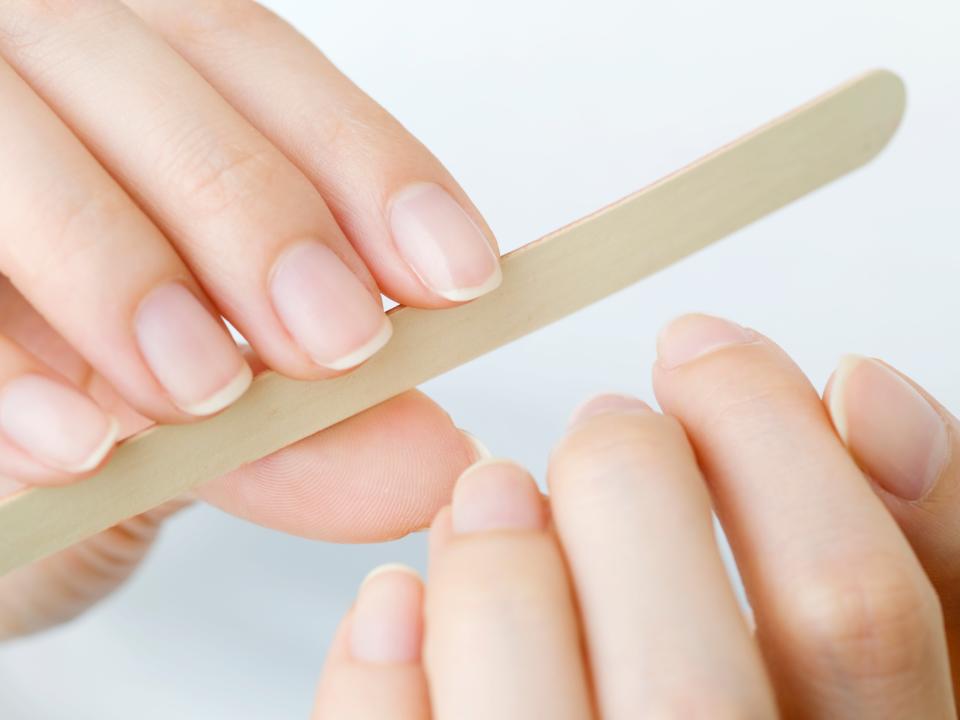
As much as we love to rock our wardrobe of knits during this time of the year, they tend to get snagged on everything. And as a result, those tiny tears can quickly turn into a major rip or crack the longer you leave it there. To avoid this, keep a file, preferably a glass one over an abrasive emery board, handy to sand down any uneven edges. “I have one in my purse, car, desk, and pretty much anywhere that I spend a lot of time,” Hanna admits. You can also use a little sandpaper (in a fine grain) or a book of matches in a pinch. Just move the file from the edge towards the middle of the nail in one fluid motion to smooth over the roughness or snapped corner so you have a harder point of entry. (Photo via kokouu/ Getty)
To prevent breakage from happening in the first place, you can keep your tips at an active length — slightly longer than your fingertips with a more square shape. “If you are prone to splits and breakage, it is best to keep nails short and to cut [them] straight across,” says Lipner.
Keep Nails Polished (and Protected)
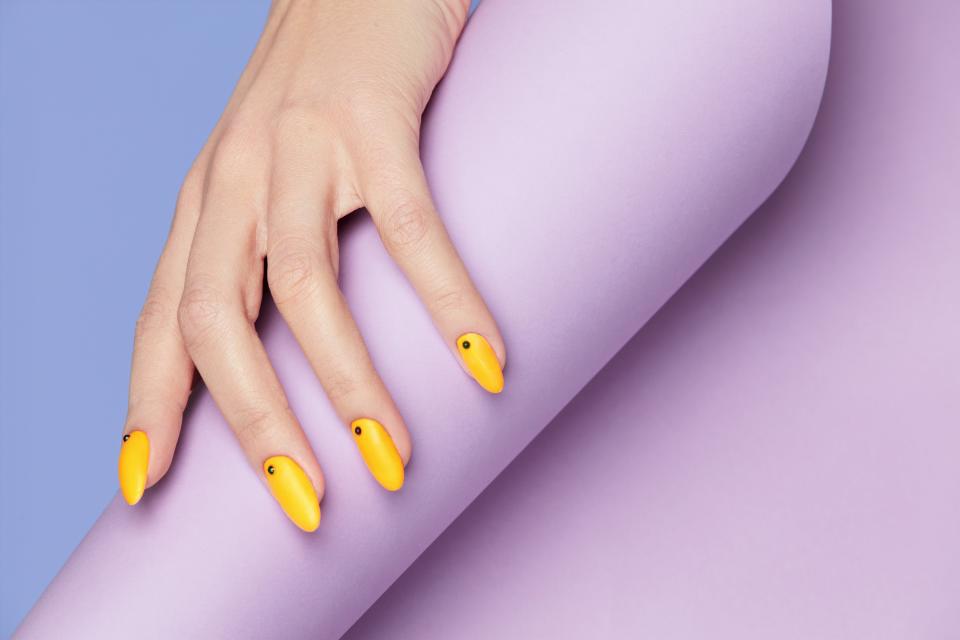
While we tend to manage our manicures for special occasions and during warmer months of the year, it doesn’t mean the nail art needs to stop once the temperature starts to drop. Keeping them painted can actually protect them from the elements (as long as you cap the free edge) since the polishes keep water (which can make them weaker) out. And even if the jewel tones synonymous with fall and winter are too bold for your aesthetic, a clear top coat can still insulate them. Just be sure to reapply every few days — it’ll maintain that shield as well as keep chips at bay. (Photo via puhhha/ Getty)
One item the experts advise against adding to your arsenal is a nail hardener. Sure, they’re ideal if your claws are already paper thin and need that extra layer of strength; however, contrary to conventional thought, it’s actually better to keep the plate relatively soft and flexible so it’s less likely to snap, snag, or break.
Similarly, some might think that gel polishes could be another line of defense, but, according to the pros, if it’s used too often, it isn’t. That’s because the removal process requires acetone, which dries nails out, as well as buffing, which can take off the top layer of keratin. This all leads to thin, fragile fingernails that are more likely to get damaged, so it’s advised that these harder lacquers be used in moderation.
Solving The Worst-Case Scenarios
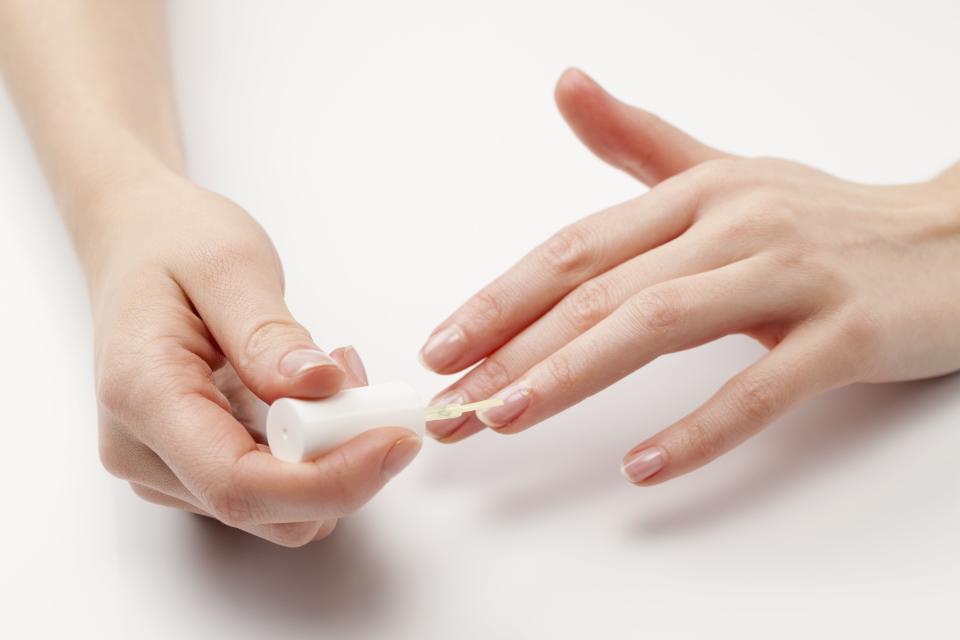
As careful as we try to be, accidents can still happen. But whether you’ve scored a small crack toward the tip or something more serious, there are a few solutions that can help save whatever length you have left. For instance, a small crack or bend might just need a few coats of gel polish to serve as a cast while it grows out. “There are so many amazing options out there that will have your nail looking long and strong again in just a few minutes,” says Hanna, who suggests stopping in the salon for this type of treatment. “The thing that’s great about gel is that it’s less harsh than acrylic, and you can easily soak it off once the crack grows out.” Though you’ll want to follow up with a serious dose of cuticle oil to nourish the dry bits and keep it pliable afterward. (Photo via Jan Scherders/ Getty)
Another option is the classic tea bag and glue trick. “Cover the nail with a Silk Wrap [at the salon], or glue down a piece of tea bag, and wait for it to grow out,” says Goldstein. At home, cut a tea bag in a shape large enough to cover the tear or even the entire nail. Next, cover it with a coat of clear polish or Krazy Glue and apply the tea bag cutout over it while it’s still wet. This will reinforce and strengthen the nail but also disguise the split. Add a layer of clear polish to seal it in and let it dry before gently buffing the surface for a smooth finish so no one will be the wiser as the damage grows out.
If you’re dealing with a serious split, such as a crack or tear over your actual fingernail, it’s time to turn to first aid. Keep the area clean, dry, and covered with gauze as it grows out to prevent the injury from getting worse. “A bad break can cause moisture and bacteria to get under the nail bed, possibly causing a fungus or infection,” says Goldstein. If you feel any discomfort or spot any unusual discoloration, you should consult your doctor for the best next steps to avoid possible infection, Lipner adds.
The worst case scenario doesn’t involve your tips though. Accidents like slamming a finger or two in a door can end up mangling the nail matrix, the light crescent shape near our cuticles, which Lipner says can affect how nails grow going forward. “It may cause permanent damage, and then the nail may continue to grow with a permanent split,” she says. In that case, it’s best to head straight to the doctor to ensure your growth isn’t permanently stunted.
For more nail tips and tricks you need to know, follow us on Pinterest.
Brit + Co may at times use affiliate links to promote products sold by others, but always offers genuine editorial recommendations.
Featured photo via puhhha/ Getty


